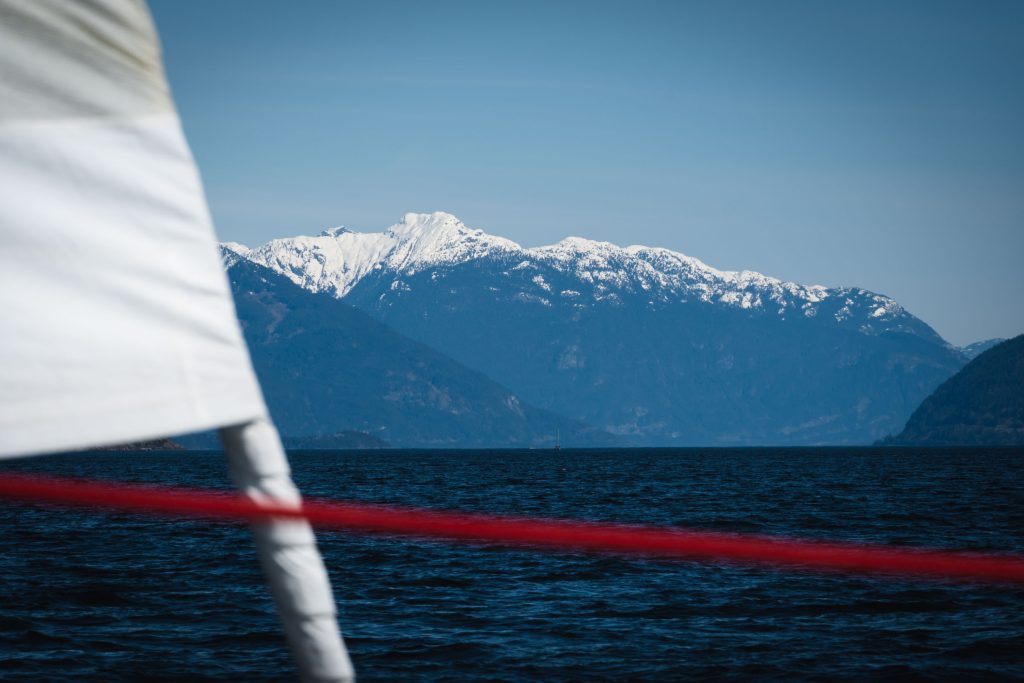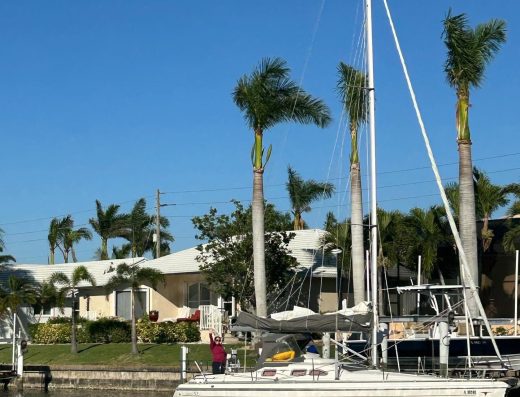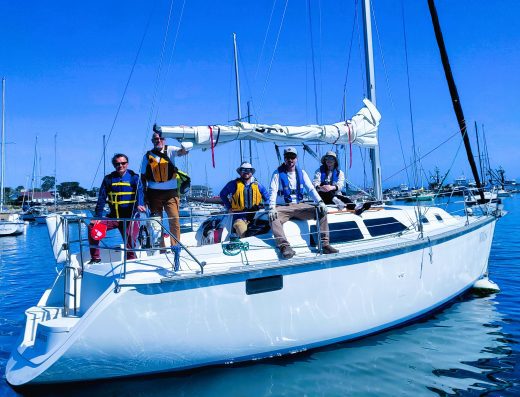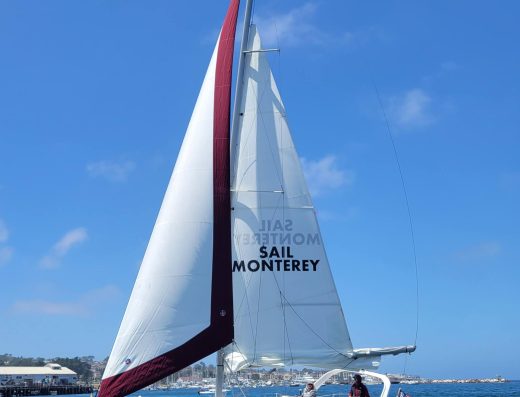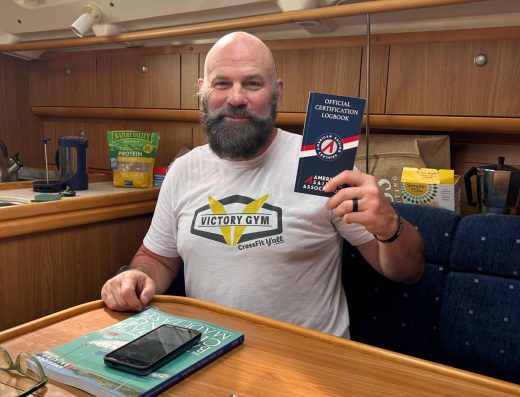ASA Sailing Courses Explained
| Beginner Crew Skills |
Intermediate Skipper Skills |
Advanced Skipper Coaching |
Expert Mastery |
|---|---|---|---|
| ASA 101 & 102 | ASA 103 & 104 | ASA 106 | ASA 108 |
About
American Sailing
The American Sailing Association (ASA) — also known as American Sailing — was founded in 1983 to teach people to sail safely and confidently. It introduced the first unified sailing education standards in the United States and has since grown into a network of more than 400 accredited schools across the U.S., Caribbean, Europe, and Asia.
ASA sailing courses are recreational certifications, guiding sailors from ASA 101 – Basic Keelboat through ASA 104 – Bareboat Cruising and all the way to ASA 108 – Offshore Passagemaking. Together, these levels form a clear pathway from beginner to accomplished offshore skipper.
With over 600,000 sailors certified, ASA qualifications are recognised by many charter companies worldwide — particularly in North America, the Caribbean, and many European countries. Graduates of ASA 104 sailing courses and above are also eligible for the International Proficiency Certificate (IPC), accepted by most Mediterranean charter operators.
Not sure which sailing course is right for you?
ASA Sailing Courses Progression Explained
Learn all you need to know about each ASA sailing course below:
ASA 101 & 102 - Keelboat Sailing
The ASA 101 and 102 Keelboat Sailing courses are the perfect introduction for anyone new to sailing.
They teach you the essentials of how a sailboat works, how to handle it safely, and how to become a confident, active member of the crew — and take the helm for the first time.
Beginner
Skill level
3-5 Days
Duration
None
Prerequisites
Crewing, Keelboat skippering
Enables
👉 Who is it for?
- Complete beginners with little to no sailing experience
- Anyone who wants to learn how to sail safely, handle sails, steer, and understand how a boat responds to wind and trim.
- Sailors planning to sail smaller keelboats or prepare for ASA 103 & 104 Cruising courses
If you’ve always wanted to try sailing, this is your starting point.
📚 How to Prepare?
ASA 101 & 102 requires no formal preparation — you can arrive with zero experience.
However, if you’d like to feel a bit more ready, we suggest:
- Enrolling in the ASA Online Introduction to Sailing course or browsing the ASA Sailing Made Easy textbook.
- Learning the one knot every sailor needs: the round turn and two half hitches.
- Getting familiar with basic boat terms like bow, stern, starboard, port, shrouds, etc.
⛵ What to Expect?
You’ll spend most of your time on the water — learning by doing.
ASA 101 and 102 can be taken separately or as a combined course. Training may be delivered as day sailing or liveaboard, depending on the school and location.
You’ll cover the essentials: sail handling, points of sail, steering, tacking, gybing, docking, safety manoeuvres, and man-overboard recovery.
The course also introduces basic navigation, weather awareness, collision regulations, and teamwork on board.
There’s no final exam — instead, your instructor will provide continuous coaching and feedback throughout the course.
🗺️ What does it Enable you to do?
After completing ASA 101 and 102, you’ll be able to:
Prep, sail, and dock a small keelboat safely in moderate conditions.
Act as a competent, helpful crew member — or take the helm with confidence under supervision.
Progress naturally to ASA 103 & 104 – Coastal Cruising and Bareboat Chartering, where you’ll learn to handle larger yachts on coastal passages.
These courses are the foundation of confident, independent sailing — the skills that open the door to every next adventure on the water.
Ready to take the plunge?
Syllabus & Key skills you'll learn
ASA 101 & 102 Syllabus
- Basic sail theory and points of sail
- Sail trim and balance
- Tacking and gybing manoeuvres
- Steering under sail and power
- Crew communication and commands
- Docking and departing
- Man-overboard recovery
- Safety equipment and procedures
- Rules of the road (COLREGS basics)
- Basic weather and navigation awareness
All ASA courses are delivered by ASA-accredited schools under qualified ASA-certified instructors.
Student Story
ASA 103 & 104 - Coastal & Bareboat Cruising
The ASA 103 and 104 Cruising are intermediate skipper courses where you make the leap from keelboat day sailing to skippering a cruising yacht.
You’ll learn to plan and run multi-day coastal passages, manage a crew, handle a 30–45 ft cruising yacht, and make good decisions underway.
Intermediate
Skill level
4+ Days
Duration
ASA 101
24 sailing hours
Prerequisites
Skippering, Charter
Enables
👉 Who is it for?
The ASA 103 and 104 courses are for sailors ready to go beyond the basics — those who’ve learned how to sail, and now want to step into command.
It’s ideal for:
- Sailors aiming to skipper a yacht on coastal passages or charter holidays.
- Anyone preparing to qualify for the International Proficiency Certificate (IPC) for Mediterranean charters.
- ASA recommends a minimum of 24 (for ASA 103) or 80 (for ASA 104) on-water sailing hours before undertaking these courses.
If ASA 101–102 taught you how to sail, this stage teaches you how to lead — how to take command, plan routes, and take responsibility for the boat and crew.
📚 How to Prepare?
By this level, you should already be comfortable trimming sails, steering, and handling a boat under supervision.
To get the most from your course:
- 🗺️ Refresh your navigation and chartwork — you’ll use it every day.
- 📘 Flip through Coastal Cruising Made Easy and Bareboat Cruising Made Easy for a quick theory refresher.
- 💻 Take the online prep course — it’s a great way to arrive confident and ready.
If you’d like to make the most out of your course, we highly recommend taking an ASA 103 Online prep class to feel more confident and prepared.
⛵ What to Expect?
These are liveaboard courses — you’ll eat, sleep, manage, and sail on the yacht for several days.
You’ll take on real skippering responsibilities:
- 🧭 Passage planning and pilotage
- ⚓ Docking, anchoring, and watchkeeping
- ⛅ Weather interpretation and navigation
- 🧰 Boat systems, maintenance, and troubleshooting
You’ll learn through hands-on practice, with your instructor coaching you every step of the way.
Assessment is continuous — no single exam, just practical instruction, feedback, and evaluation as you progress.
🗺️ What does it Enable you to do?
After completing ASA 103 and 104, you’ll be able to:
- 🧭 Skipper a 30–45 ft cruising yacht.
- ⚓ Plan and execute coastal passages, manage your crew, and handle your yacht with confidence to keep learning more.
- 🌍 Charter yachts — ASA 104 is widely recognised as the standard for bareboat charter.
- 📄 Apply for the International Proficiency Certificate (IPC) required for Mediterranean charters.
It’s challenging but incredibly rewarding — the stage that puts you in a position to sail a yacht on your own.
Are you ready for it?
Syllabus & Key skills you'll learn
ASA 103 & ASA 104 Syllabus
- Plan and navigate coastal passages
- Read charts, tides, and weather patterns
- Handle a 30–45 ft yacht under sail and power
- Anchor, dock, and manoeuvre in confined spaces
- Understand onboard systems (diesel, electrical, water, galley)
- Manage provisioning, watchkeeping, and safety for multi-day trips
- Lead a crew and make sound decisions
- Conduct emergency drills, including fire, flooding, and MOB recovery
- Perform basic maintenance and troubleshooting underway
- Apply seamanship, navigation, and leadership to real cruising scenarios
All ASA courses are taught by ASA-accredited schools under certified ASA instructors.
Student Story
ASA 106 - Advanced Coastal Cruising
ASA 106 is an advanced skipper course that builds on your cruising experience to prepare you for extended coastal passages in challenging conditions. You’ll refine advanced sail handling, heavy-weather tactics, and night navigation while managing a yacht and crew over multi-day voyages.
Advanced
Skill level
5+ Days
Duration
ASA 105
80h sailing
Prerequisites
Extended Coastal & Night passages
Enables
👉 Who is it for?
- Skippers already confident sailing and skippering a yacht on coastal passages by day.
- Sailors preparing for more ambitious routes involving night sailing, tidal strategy, and varied weather conditions.
- Those looking to push their seamanship and decision-making to a higher level of competence.
Prerequisites: ASA 105 – Coastal Navigation (theory) and at least 80 hours of sailing experience.
This is a coaching-based course that builds on your existing skippering experience — refining your judgement, confidence, and advanced sailing skills
📚 How to Prepare?
Before starting ASA 106, you should have logged several coastal passages as skipper and feel confident with the fundamentals of navigation, seamanship, and boat handling.
To get the most from your course:
- 🗺️ Brush up on navigation
- ⚓ Get out on the water if you can, and note any gaps in your skills you’d like to refine.
- 📘 Review your ASA textbooks, particularly Bareboat Cruising Made Easy and Advanced Cruising & Seamanship.
If you’d like to make the most out of your course, we highly recommend taking an ASA 105 Coastal Navigation theory course to feel more confident and prepared.
⛵ What to Expect?
This is a liveaboard, coaching-based course with a focus on practical skippering and decision-making under real-world conditions.
You’ll sail longer legs — often day and night — while rotating through leadership roles aboard.
Expect to:
- ⚙️ Plan and execute extended passages with full consideration of crew, tides, and weather.
- 🌙 Navigate by night using lights, buoys, radar, and electronic aids.
- 🌊 Practice heavy-weather tactics.
- 🧭 Refine advanced sailing and boat-handling skills through hands-on drills and coaching.
You’ll receive continuous feedback, coaching, and assessment throughout.
🗺️ What does it Enable you to do?
After completing ASA 106, you’ll be able to:
- 🧭 Skipper a cruising yacht on extended coastal passages by day or night.
- ⚓ Plan, prepare, and execute multi-day voyages safely and efficiently.
- 🌊 Handle heavy-weather sailing and make calm, informed decisions under pressure.
- 🧑🤝🧑 Lead your crew with confidence and clear communication.
- 🚀 Progress toward ASA 108 – Offshore Passagemaking.
It’s a demanding but deeply rewarding course — one that gives you the tools and independence to brave the deep blue.
Ready to refine and push your skills?
Syllabus & Key skills you'll learn
ASA 106 Advanced Coastal Cruising Syllabus
- Sail theory, balance, and advanced sail trim
- Heavy-weather seamanship and storm tactics
- Passage planning and night navigation
- Weather interpretation and forecasting
- Advanced anchoring, mooring, and rafting
- Towing and assistance procedures
- Emergency drills and damage control
- Systems knowledge and basic engineering
- Advanced boat handling under sail and power
- Navigation and watchkeeping
- Safety, etiquette, and crew management
All ASA courses are taught by ASA-accredited schools under certified ASA instructors
Student Story
ASA 108 - Offshore Passagemaking
ASA 108 Offshore Passagemaking is the expert-level qualification in the ASA cruising pathway — the final step for advanced sailors ready to take their skills beyond the coastline and into true blue-water sailing.
You’ll learn how to plan and execute offshore passages over several hundred miles, manage your vessel and crew at sea for extended periods, and navigate using both modern and traditional celestial methods.
Expert
Skill level
5 Days
Duration
ASA 106 + 107
Prerequisites
Ocean Sailing
Enables
👉 Who is it for?
- Skippers who are confident in their coastal sailing skills and want to gain true offshore competencies.
- Sailors preparing for ocean passages, delivery work, or extended bluewater cruising.
- Those aiming to apply and refine their celestial navigation skills at sea.
ASA 108 completes your sailing skillset — equipping you with the confidence and knowledge to brave the open ocean.
Prerequisites: ASA 106 & 107 Competencies.
📚 How to Prepare?
Before enrolling, you should have experience skippering multi-day coastal passages and a working knowledge of celestial navigation.
To get the most from your course:
- 🧭 Review your ASA 107 – Celestial Navigation theory and practice sight reductions.
- ⚓ Sharpen your advanced sailing skills — get out on the water if you can before your course.
- 📘 Study your USCG Navigation Rules & Regulations Handbook
Prior to the practical course, you’ll need a solid theoretical grasp of Celestial Navigation.
If unsure, we highly recommend taking the ASA 107 Celestial Navigation theory course beforehand.
⛵ What to Expect?
This is a liveaboard offshore course, typically including a continuous passage of more than 100 NM and 72 hours at sea.
You’ll plan, execute, and manage a real offshore voyage as part of a small crew, rotating between skipper and crew roles.
Expect to:
- 🗺️ Plan and conduct an offshore passage — considering weather, vessel readiness, crew management, and provisioning.
- 🌙 Stand watches by day and night, maintaining logbooks and navigation records, including celestial fixes and heading checks.
- ⚙️ Prepare for and respond to emergencies such as equipment failure, fire, dismasting, man overboard, or abandoning ship.
- 🌊 Manage sail plans and heavy-weather tactics throughout offshore conditions.
Your instructor will coach and assess you continuously during the passage — focusing on seamanship, leadership, and sound judgement at sea.
🗺️ What does it Enable you to do?
After completing ASA 108, you’ll be able to:
- 🧭 Plan and skipper offshore and ocean passages.
- ⚓ Apply celestial and electronic navigation confidently at sea.
- 🌊 Lead bluewater cruising adventures with full command of your vessel and crew.
It’s the capstone of the ASA cruising program — proof of the knowledge, confidence, and skill it takes to sail our ocean planet.
Ready to take your skills beyond the horizon?
Syllabus & Key skills
ASA 108 Offshore Passagemaking syllabus
- Offshore passage planning and great-circle routing
- Voyage preparation, vessel selection, and provisioning for long passages
- Offshore safety management and emergency procedures
- Watchkeeping systems and crew organization
- Medical preparedness and first aid at sea
- Food storage, cooking, and galley safety underway
- Advanced celestial navigation
- Navigation rules and international distress signals
- Jury rigging, lightning strike, MOB, and abandonment procedures
- Offshore communication and survival equipment
- Leadership, crew welfare, and fatigue management
All ASA courses are taught by ASA-accredited schools under certified ASA instructors
Student Story
Current ASA Sailing Course Listings
ASA | Frequently asked questions
Are ASA sailing courses recognized internationally?
For the most part, yes.
There’s no single “global sailing licence,” but ASA qualifications are widely recognised in many parts of the world — particularly in North America, the Caribbean, and much of Europe.
Completing ASA 104 – Bareboat Cruising makes you eligible to apply for the International Proficiency Certificate (IPC), accepted by charter companies in Greece, Croatia, Spain, France, Turkey, and other popular destinations.
Recognition still varies by country and operator, so always confirm local requirements before you charter.
How does the ASA ensure instructor quality?
ASA instructors are certified professionals who’ve demonstrated both exceptional sailing ability and the skill to teach others effectively.
To qualify, instructors must meet strict ASA Instructor Standards, attend an Instructor Qualification Clinic (IQC), and pass practical and theoretical evaluations at a much higher level than the courses they’ll teach.
Do I need to take a theory course?
Not strictly — but you do need to have the theoretical knowledge at the same level as the course you’re taking.
For example, ASA offers online theory courses to help you prepare for practical levels like ASA 103 and 104.
Some higher-level theory courses, such as ASA 105 (Coastal Navigation) and ASA 107 (Celestial Navigation), are formal prerequisites for their corresponding practical courses (ASA 106 and ASA 108).
Taking the theory beforehand ensures you arrive ready to focus on real-world sailing skills — making your time on the water more effective and rewarding.
Do I need to ‘do every step’ and take all courses in order (e.g., ASA 101 before 103)?
Not necessarily — but each course has official ASA prerequisites.
If you already have the required sailing experience, you can “challenge” a prerequisite course rather than retaking material you already know.
For example, if your skills already match ASA 101 – Basic Keelboat, you can challenge that level when enrolling in ASA 103 – Coastal Cruising.
Challenging a course usually involves:
A written exam based on the official ASA textbook for that level.
A practical skills assessment with an ASA-certified instructor.
A small administrative or challenge fee, set by the school.
It’s a practical way for experienced sailors to receive ASA certification that matches their real-world skills — without repeating earlier courses.
Requirements and fees vary slightly between schools, so always check with the ASA training centre you plan to book with.
How long are ASA sailing licences valid for?
No — ASA certifications never expire.
Once earned, your ASA qualification is valid for life.
The only exception is the International Proficiency Certificate (IPC), which must be renewed every five years to remain valid for international charter use.
Can I use ASA sailing licenses professionally?
No — ASA certifications are recreational only.
They don’t qualify you to take paying passengers or work as a professional captain, charter skipper, or delivery skipper.
If your goal is to work commercially in the US, you’ll need a U.S. Coast Guard (USCG) captain’s license — typically the OUPV “Six-Pack” or Master 25/50/100 GRT credential. These are federal licenses that require documented sea time, medical and background checks, and passing the USCG exams.
That said, ASA courses are an excellent foundation — they help you build the seamanship and experience you’ll need when applying for a professional license.
We’re preparing a full Find a Sail guide to professional sailing licenses soon — keep an eye out and sign up for our newsletter to be the first to know when it’s published!
Can I get an ICC (International Certificate of Competency) through the ASA? What is an IPC?
No — ASA cannot issue the ICC (International Certificate of Competence) because only countries that have signed the United Nations Resolution 40 can do so, and the United States is not a signatory.
Instead, ASA created the International Proficiency Certificate (IPC) — a document recognised by many European charter companies as proof that you have the skills and qualifications needed to safely operate a charter yacht.
While the IPC isn’t an official equivalent of the ICC, it serves a similar practical purpose in many destinations such as Greece, Spain, Croatia, France, and Turkey.
We’ll be publishing a full guide to ICCs, IPCs, and international charter requirements soon — so sign up for our newsletter to get notified when it’s live.
What sailing license do I need to charter a yacht?
Requirements vary around the world, but as a rule of thumb, ASA 104 – Bareboat Cruising (or higher) is widely accepted by charter companies, especially in North America, the Caribbean, and parts of Europe.
If you plan to charter in the Mediterranean or other European destinations, it’s recommended to hold an ASA International Proficiency Certificate (IPC) alongside your ASA 104. The IPC helps demonstrate your competence where the ICC is normally required.
Many charter companies — particularly outside Europe — will ask for a sailing résumé in addition to a license. Be sure to log your sea time and keep track of your experience so you can provide an accurate sailing history.
Many countries also require a VHF/SRC radio operator certificate for the skipper or a crew member.
Requirements differ by country and charter operator, so always confirm the details before you book your trip.
We’ll soon publish a full Find a Sail guide to charter license requirements around the world — keep an eye on your inbox and subscribe to our newsletter to be notified when it’s out!
Where can I take ASA sailing courses?
Where can I take ASA courses?
The American Sailing Association has one of the largest international networks of sailing schools, with over 400 accredited locations worldwide.
Most ASA schools are based in the United States, the Caribbean, and Southeast Asia, but you’ll also find them in Mexico, Canada, Europe, Middle East, and the South Pacific.
The same standards and certifications apply globally, though local sailing conditions may differ — offering a great way to broaden your experience while exploring new waters.
Are there any other ASA boating courses?
Yes — ASA offers a wide range of recreational sailing certifications and endorsements beyond the core pathway we’ve covered here.
Some of the highlighted programs include:
ASA Certifications & Endorsements
- ASA 101 – Keelboat Sailing 1
- ASA 102 – Keelboat Sailing 2
- ASA 103 – Coastal Cruising
- ASA 104 – Bareboat Cruising
- ASA 105 – Coastal Navigation
- ASA 106 – Advanced Coastal Cruising
- ASA 107 – Celestial Navigation
- ASA 108 – Offshore Passagemaking
- ASA 110 – Small Boat Sailing
- ASA 114 – Cruising Catamaran
- ASA 116 – Dinghy & Outboard Endorsement
- ASA 117 – Celestial Endorsement
- ASA 118 – Docking Endorsement
- ASA 119 – Marine Weather Endorsement
- ASA 120 – Radar Endorsement
For the full list and details of each certification, see the official ASA page: ASA Certifications
